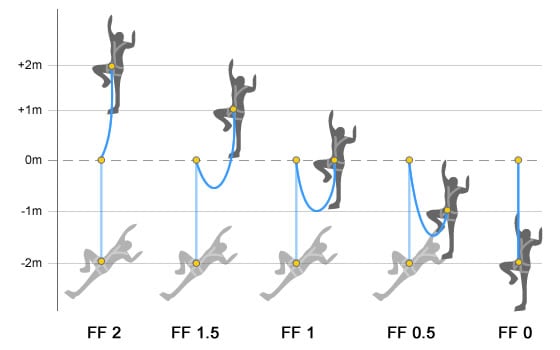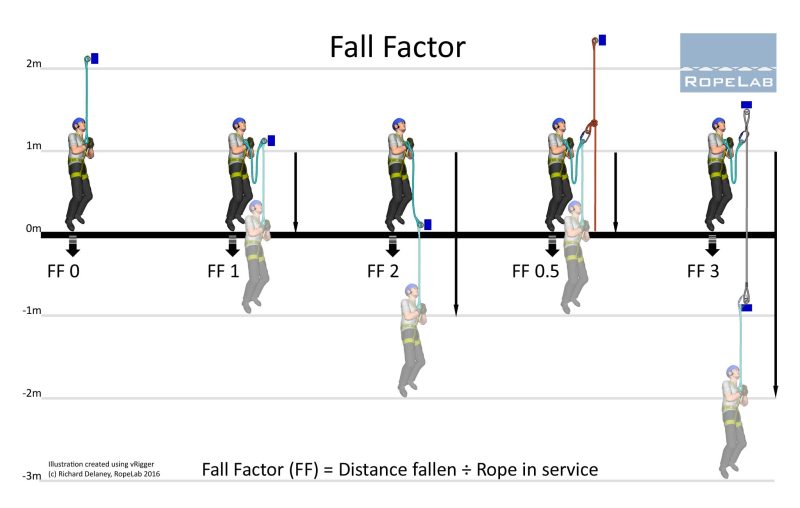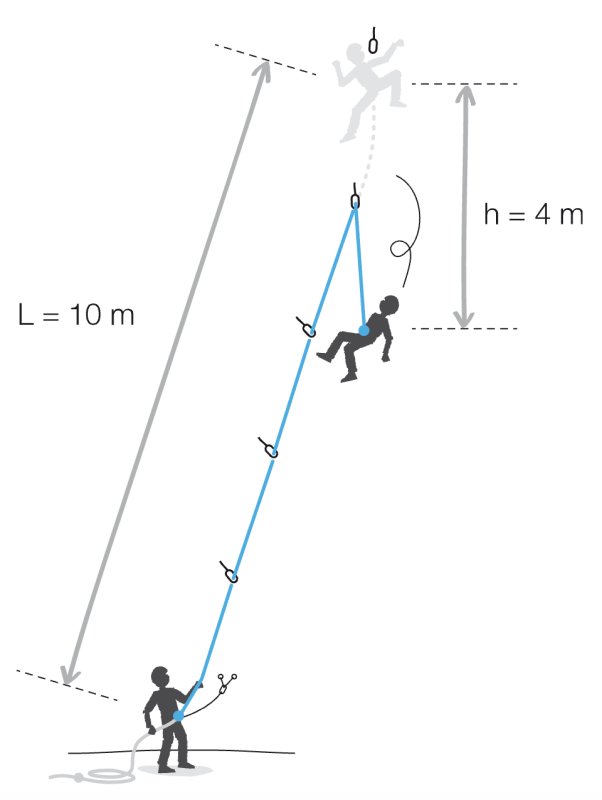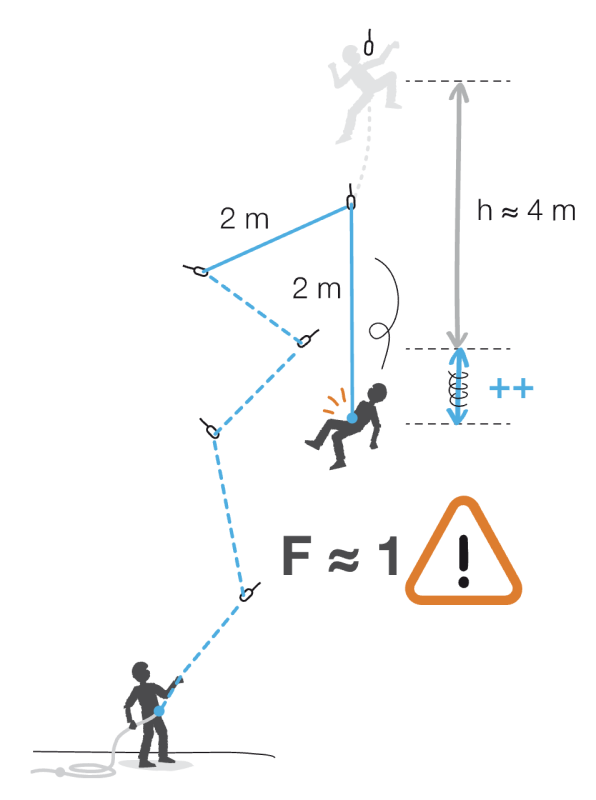Fall factor
The fall factor is the ratio of fall length to rope length.
The fall factor is often used to quantify the severity of a climbing fall.
It can have a value between 0 and 2 in climbing.
Fth = theoretical fall factor
Fall length = length of the climber’s fall
Rope length = length of rope between belayer and climber
In climbing the severity of the fall does not depend on the fall length, as the longer the rope, the more energy it can absorb.
Fall Factor 2 is the highest for static anchor. When you use lanyard you can get much higher FF:
In these two cases, the severity of the fall increases. The free fall length is the same. There is the same amount of energy to absorb, but the system is less dynamic.
In theory, the higher the fall factor, the higher the forces generated. The concept of severity as a function of fall factor is useful only with a dynamic rope. The longer the rope, the more energy it can absorb. The fall factor model is rather simplistic, as it does not take into account important factors such as rope drag, type of belay device, belayer displacement…
At the protection points, that is where the rope goes through the carabiners etc, there is friction between the rope and metal. If the rope is straighter as it passes through the hangers, the friction at this point will be lower. But if the rope zigzags through the hangers, the friction on this point is relatively high. This prevents the rope from stretching in case of a fall. In our comparison this means that the payout rope length must be replaced by an effective payout rope length, which is always smaller than the actual rope length. So the fall factor will be larger, the less straight the rope line is.
The belayer hangs on the rock face and is free moving. If the climbing partner falls, they can also be pulled up a bit. This has the result that some of the energy generated in the fall, is released onto the belayer and the person falling “loses energy”. They slow down. In our formula the displacement of the belay partner has the effect of a reduced mass. This means the mass, which is relevant for the impact force, will be reduced by the movement of the belayer.
At the same time it is important to note that the movement of the belayer can also be dangerous. In falls with a high fall factor the belayer will really be jerked upwards. This can in some cases lead to injuries. The only way to prevent this is by ensuring that you have enough maneuverability, which means that the belay position is ideally a few meters under the first protection point, so that the belayer can be hoisted a large distance.
If the rope is allowed to sag a little, the fall height and the rope length increase equally. This can have both a positive as well as a negative effect on the fall factor. For f<1 the fall factor increases and the fall becomes harder. Therefore slack should be avoided. In falls with fall factor f≥1 the fall factor becomes smaller with slack. The impact of the fall will therefore be reduced. It is also important to make sure that the increased fall height of the climber does not lead to a higher risk of accidents, for example collision with the rock face, the ground or even the belayer, if the fall height is longer than the payout rope!
Petzl – Fall factor and impact force – theory
Klimwinkel.nl – Petzl Dynamischetouwen info sheet
Bergfreunde.eu – fall factor calculator
Gymclimber.com – climb safe fall factors explained/
Edelweiss-ropes.com






